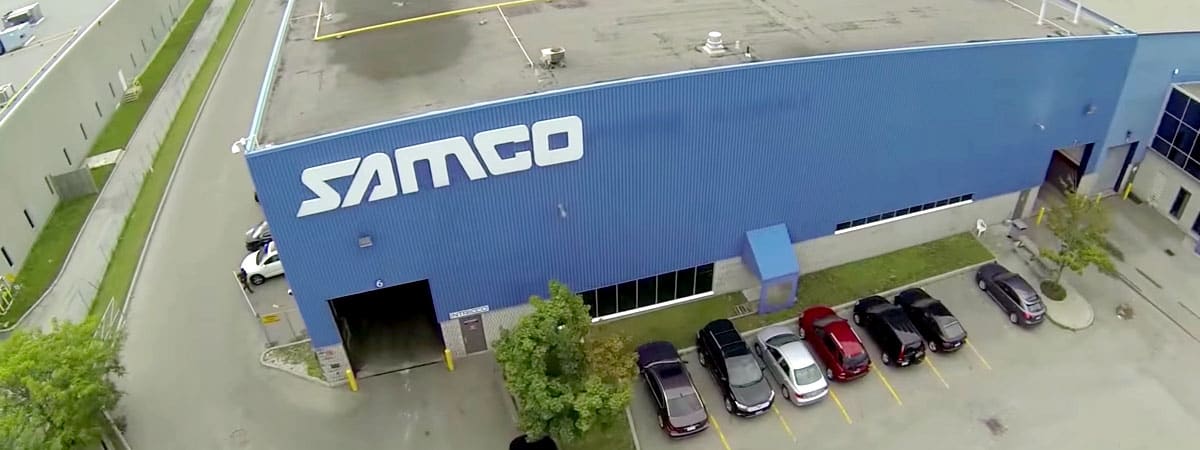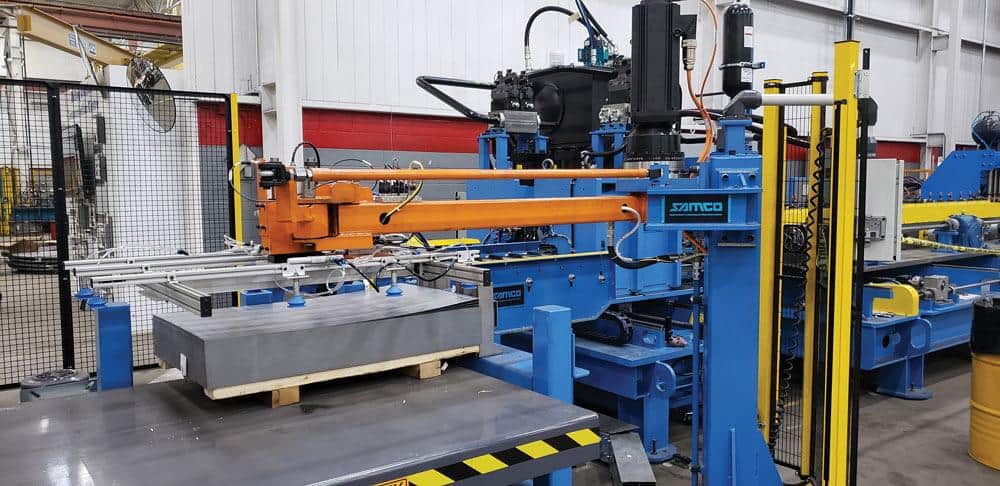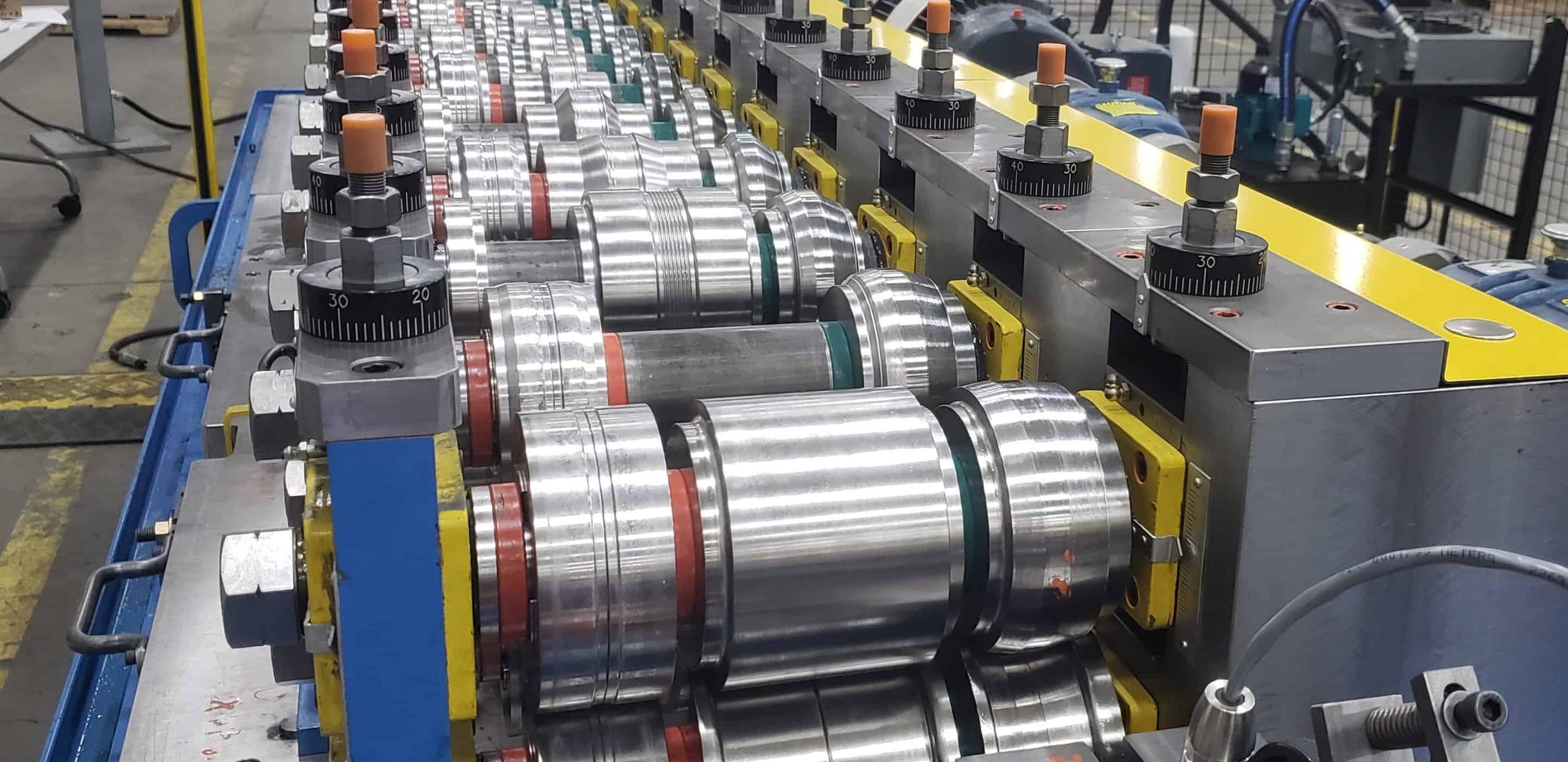
Understanding the benefits of roll forming over press braking
Samco Machinery explores options for customers looking to grow their business
TORONTO, April 2016 – Samco Machinery doesn’t work with a crystal ball, but the company’s experience helps customers make important decisions justifying the migration to outsource roll forming vs. in-house brake forming. Press braking has – and will always have – its place in the forming of metal products. However, as soon as a customer is faced with high volume production, is in need of more complex profiles or is seeking to explore more cost-effective processing options, outsourcing production to custom roll formers becomes a viable option.
“For anyone producing an extremely low volume of product, press braking is feasible,” says Darryl Levesque, Vice President of the Samco Machinery’s Rolling Division. “As soon as you require a shorter lead time, a higher volume, improved efficiency and a competitive cost structure to better compete within your niche market, altering their product portfolio to a roll form process and outsourcing production to a custom roll former makes sense.”
Anyone who has operated a press brake can appreciate the limitations. Samco aids its customers through the evaluation of their current processes, understanding of their strategic and operations goals and objectives, and the assessment of their needs through the review of the following basic facts.
Material
Brake Press material must be sheeted, slit and cut to length prior to forming any profile, whereas with roll forming, material is fed via coil … “reducing the cost of material handling and improving overall equipment runtime efficiency,” Levesque says.
In addition, high yield materials (ex. Martensitic) are also very difficult or impossible to process through a press brake process due to the challenge in controlling springback, according to Levesque. Roll forming does not present this type of material limitation as high yield material springback can be controlled easily through the design of Samco’s roll set tooling.
Volume
Production efficiency, resource utilization, and OEE (Overall Equipment Effectiveness) are the standard key performance indicators that measure an organization’s manufacturing success. “To ensure operational peak performance is achieved when high volume is demanded; essential processes require increased scrutiny,” states Levesque.
“What may have worked for Low Volume/Short Runs (Press Braking) will not work for High Volume/Long Runs (Roll Forming),” Levesque says. “Due to the nature of the press brake process (each bend requiring a single feed), increased cycle time and excess labor all lend to decreased efficiencies and overall poor performance when faced with high volume customer demands. There are no constraints within a linear roll form process as the finished product is completed in a single pass thus maximizing your equipment efficiency and filtering the savings directly to your customer. The faster you can get product out the door, the faster you can improve cashflow.”
Quality & Design
In addition to production efficiency, the maintenance of part quality is critical to any customer delivery. While press braking has slight advantages with respect to end flare and pre-pierced hole locational tolerance, it cannot maintain the same level of profile tolerance that a roll form process will achieve. Complex profiles can easily be formed through the single pass linear roll form process whereas press braking has limited capability to accommodate complex bends, that is, a press brake part can only be bent so many times.
Operational efficiency and VAVE activities seek to not only improve the bottom line of any given organization, but to also ensure long term market viability and growth.
“Samco Machinery has been supporting its customer’s needs for more than 40 years, and will continue to excel in supporting the business decisions that are the ‘right’ thing to do by looking beyond the immediate product and truly understanding its customer’s goals and objectives,” Levesque says.
Learn more about Samco’s Rolling Division or contact Darryl Levesque at 416-285-0619 x 310. He can also be reached via e-mail


